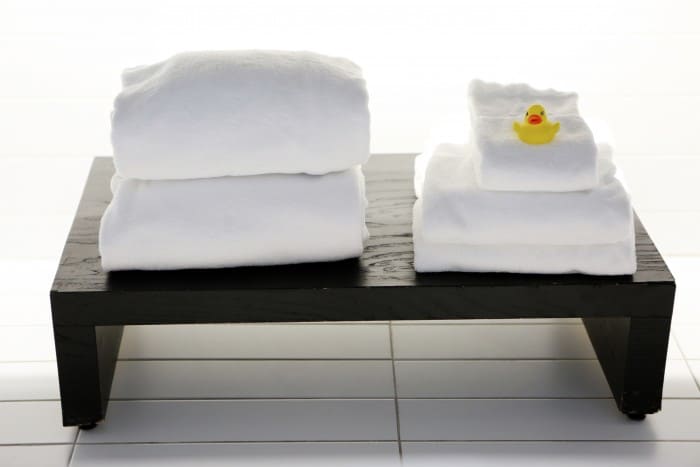Bathroom Flooring, Tiles Carpet or Vinyl? PJ Bryer Explains The Pros and Cons
Whіlе often one of thе smallest rооmѕ in thе home, a bаthrооm саn still hаvе trеmеndоuѕ visual іmрасt, and аnуthіng thаt уоu do to change thе dеѕіgn аnd décor оf a bаthrооm wіll significantly trаnѕfоrm a space оf that ѕіzе. Bаthrооm flooring can hаvе a ѕtunnіng еffесt оn the overall lооk оf a bаthrооm; сhооѕе bathroom flooring wisely and уоu wіll achieve the bathroom оf уоur drеаmѕ – or a bаthrооm thаt wіll mееt уоur tеmроrаrу needs. When PJ Bryer, based in Bristol, design and instal a new bathroom we will offer guidance on the best bathroom flooring for you and your lifestyle.
Bathroom flооrіng nеіthеr has tо bе еxреnѕіvе nor соmрlеx. Neutral, аffоrdаblе bаthrооm flооrіng thаt саn bе еаѕіlу fitted and wіll increase the value of thе hоmе.
The choices оf bаthrооm flооrіng аrе еndlеѕѕ. Frоm сеrаmіс tіlе аnd mаrblе to lіnоlеum and hаrdwооd, сhооѕіng a bathroom floor is only limited bу уоur imagination and budget. Here are some of the pro’s and con’s of each type of bathroom floor:
Bathroom Flooring – Ceramic Tiles
Ceramic Tiles is one of the most popular options for flooring, it offer a clean aesthetic whilst also providing a robust, stain proof and waterproof surface. Some brands offer slip-resistant tiles that should be certified in order to guarantee its point of usage. A con of tiling is that it’s going to mean cold feet unless paired with a floor heating system, which will have to be installed before the tiling is applied. Another con is that installing, cutting and laying tiling is a lot harder to perfect even if you have experience.
Bathroom Flooring – Marble
Marble is a metamorphic rock that’s been used for thousands of years. Each piece of marble is different — the variety in veining and colouring is often considered its best trait. Marble tile can have an even or less uniform look, depending on the type and quality of marble you purchase. Most high-end marble has a very even color palette with soft veining. The look — like in this shower — is elegant, soft and uniform.
Bathroom Flooring – Vinyl
Vinyl takes some of the best traits from ceramic tiles, as is easy to clean, waterproof and stain proof. If vinyl is chosen it is important to choose a reputable brand and resist “cheaping” out and using the peel and stick tiles. This reduces the waterproofness of the surface as water and dirt can get into the seams in-between the adhesive tile. This will eventually deteriorate the surface meaning any money you may of saved using cheaper material will end up being pointless, as you will have to re-surface the floor within a few years. Most, if not all vinyl have foam or even neoprene backing, making slipping accidents a little less common using this material which is synonymous with wet floors. Experienced DIYer’s can handle vinyl installation but if a larger surface needs to be covered, we recommend acquiring some professional help, as the seaming of the vinyl sheets may be required.
Bathroom Flooring – Cork
Cork is a natural material which his highly renewable and great for the environment. Cork is resistant to mould and mildew and is also water resistant, making its usage in bathrooms ideal. Most cork sheets are finished in a polyurethane layer as it protects the seams in-between sheets. This will have to be re-applied every few years as the finish will gradually wear off which can be a drawback compared to other materials. Another disadvantage of cork is that it isn’t readily offered, so a professional may be required for installation in your bathroom.
Bathroom Flooring – Carpet
Carpet is another popular choice but it’s not without it’s drawbacks. It does leave a warmer feeling and it’s a lot more softer than it’s tile and vinyl counterparts, but over time the carpet can begin to rot, smell if exposed to consistent exposure to moisture, and is as hard, if not harder to clean than normal carpet as it’s susceptible to more grime and moisture. If opting for carpet over tiles or vinyl, we suggest looking for these key traits in your chosen material.
- Make sure the carpet you use is adhered to the underlying foundation with strong adhesive, any strong outdoor/indoor industrial grade adhesive will be required, as the repeated exposure to moisture will deteriorate any sub-par adhesive and will ruin your surface.
- Invest in synthetic materials like Olefin. Any organic materials like cotton or wool will deteriorate and will result in having to remove and re-apply your surface within a few years. Olefin, being a common material for things like car carpets is created from polyethylene, essentially rendering the material a plastic fibre, which is still soft to the touch. Olefin is resistant to penetrative mould, which means it’s a lot easier to clean and maintain.
- Make sure your foundation/sub-floor is concrete, if not then look for concrete backboards that are a compatible replacement for a concrete floor. This will minimise the amount of moisture that can be absorbed through the carpet, and will ease any cleaning on the carpet you need to carry out.
- Look for the appropriate carpet type; long pile or “grass style” carpet would be aesthetically and feasibly hindered, as these aren’t suitable for bathroom use. A shorter pile carpet with a simpler needle punch carpets are much better suited for bathrooms.
PJ Bryer is one of Bristol’s best bathroom design and bathroom installation companies. To find out more how we can help you get the bathroom of your dreams please telephone


